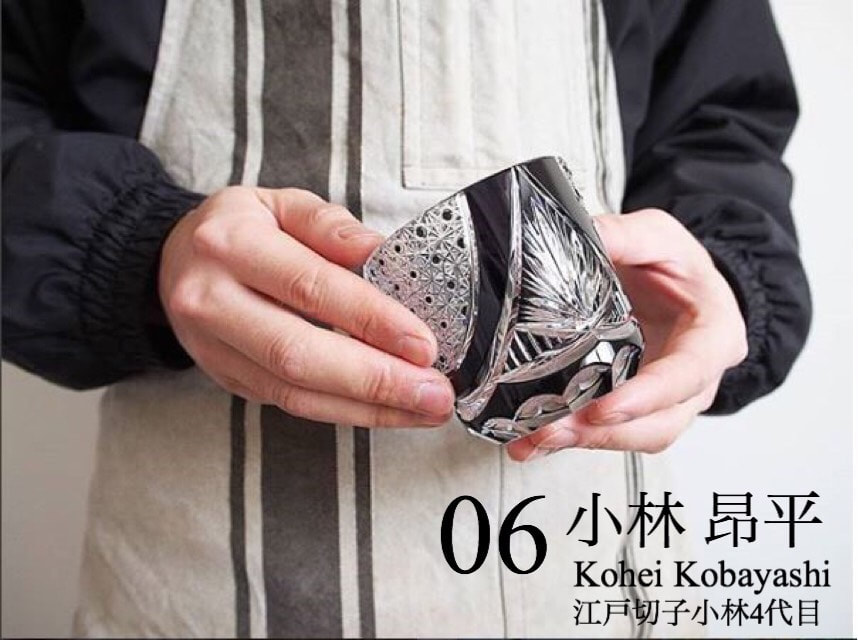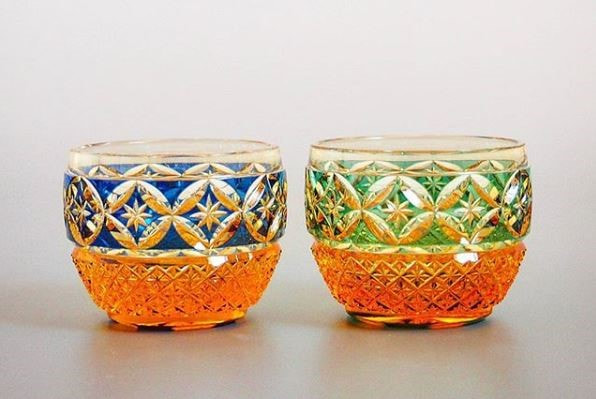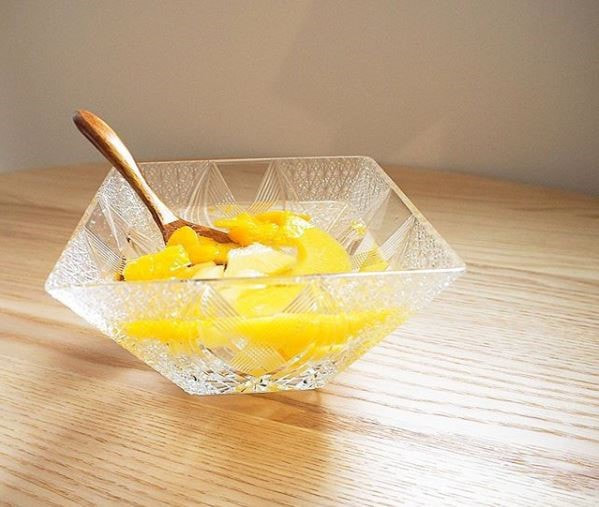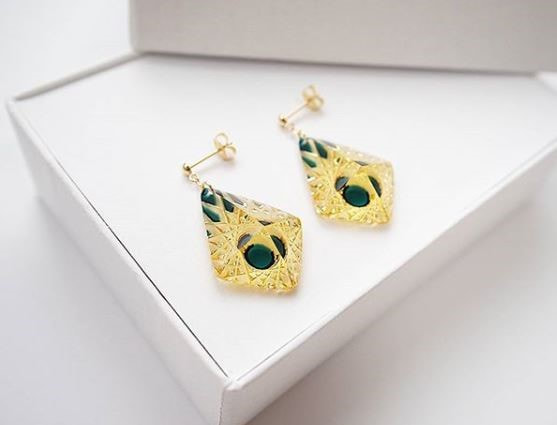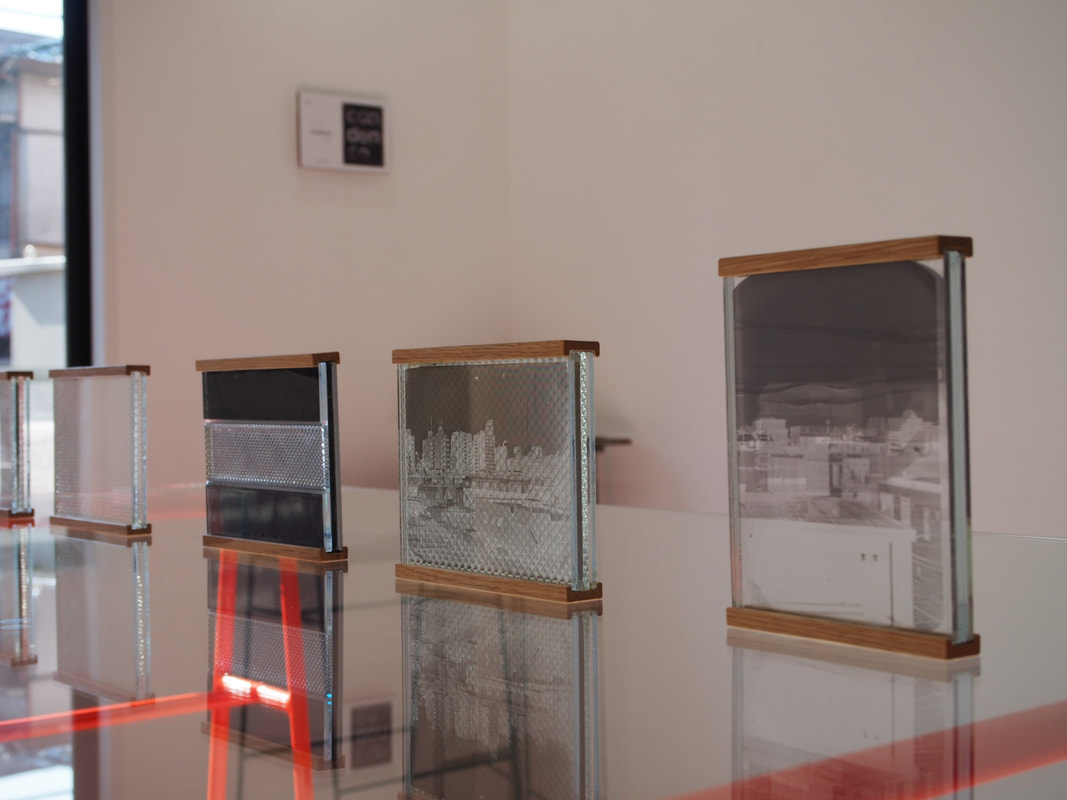|
Continuing from the previous article, we interviewed Kohei Kobayashi, the fourth generation of Edo-kiriko Kobayashi. In the first part, we asked about the history of Edo-kiriko Kobayashi and how he decided to take over the business after his experience in America. Designing accessories to collaborating with photographers- So did you tell your father that you were going to succeed him when you came back from the U.S.? I told him casually, without any particular formality, and I came to join his workshop. My father rarely taught me any tricks, and I practiced the patterns on my own, but as a result, I learned more skills on my own, which I use and connect to various things. I had to be able to make one of the vessels by the time I graduated from the university, so I set various goals for myself and kept practicing. Particularly in my third year of university, I went into the studio in between classes and used the time that others were working hard for job hunting. - I really like the amber color of the pieces you have lined up here. I hadn't seen much of it before, but it's a wonderful color. Amber is a color that has become increasingly popular in the last few years. There seems to be a time when it was just as popular as it was decades ago. It looks like a new design, but it's actually been around for a long time. The designs are weeded out according to the popularity of the time, and the best-selling ones naturally remain. It is possible that new designs will be created in the future to meet the needs of the times. On the contrary, transparent ones are the standard. Edo-kiriko is basically transparent, but Satsuma-kiriko, on the other hand, uses thicker colored glass, which results in a gradation in the cut area. Colored Edo-kiriko is characterized by the contrast between the color of the colored glass and the transparent base color when it is cut into small pieces. - Are there any new customers who have recently started to purchase your products? We used to have a lot of older customers, but recently, as the recognition of kiriko has increased, younger people in their 30s and 40s have started to buy our products. In the past, the demand was mainly for gifts, but now I feel that more and more young people are buying for themselves. - What do you think is the reason for the increase in recognition among younger people? I think one of the main reasons is that the downtown area has been highlighted and Edo-kiriko has attracted attention as a craft, thanks to social media and the Tokyo Sky Tree, which has given people more opportunities to learn about Edo-kiriko. It seems that kiriko is becoming a part of people's daily lives, as it is introduced in the media, used as a fixture in hotels, and increasingly sold in department stores. I would like to convey the value of faceted glass along with the story of each piece, which is created with great care. - Recently, you have also been working on accessories. I have been searching for a way to enjoy Edo-kiriko other than glasses and other tableware, and started making accessories around 2014. In order to make the younger generation more aware of the appeal of glass, I launched a brand and am constantly searching for ways to make better products. While I am fundamentally determined to make what I think is good, I am also very interested in exploring the possibilities of glass, such as interior objects, in addition to accessories, so that the younger generation and people from various fields will be interested. I am always thinking about what I can do with glass. I am also interested in collaborating with other genres, and I challenged myself to create a joint work with a friend who takes art photographs using the classic technique of wet plate photography. The photo of Sakamoto Ryoma, which you all know, was taken using the same technique, but in wet plate photography, the entire glass plate acts as a film, so the kiriko cutting can be applied on the photo. We spent a lot of time together outside of work to create these works and exhibited them at the gallery. I would be happy if they reach people who would like them as works of art. Interview: Kaoru
Translation: Kaoru
0 Comments
Leave a Reply. |
NC InterviewExploring lives of young practitioners of Japan's artistic heritage. - List -
01. [Dance] Nakamuraryu - Ume Nakamura (Part1) 01. [Dance] Nakamuraryu - Ume Nakamura (Part2) 02. [Sing] Itchu-bushi - Ryochu Miyako 03. [Sencha tea] My Sencha Salon - Iga Michiho 04. [Flower Arrangement] Sekiso school - Shoko Okudaira (Part1) 04. [Flower Arrangement] Sekiso school - Shoko Okudaira (Part2) 05. [Urushi Laquer] Urushi artist - Tomoya Murose 06. [Glass art] Edo-kiriko Kobayashi - Kohei Kobayashi (Part 1) 06. [Glass art] Edo-kiriko Kobayashi - Kohei Kobayashi (Part 2) 07. [Tea] Edosenke - Hiroyuki Kawakami 08. [Tatami] Tanaka Tatami - Hiroyuki Tanaka 09. [Lacquer brush] The 10th generation of the original lacquer brush artisan - Torakichi Izumi |

